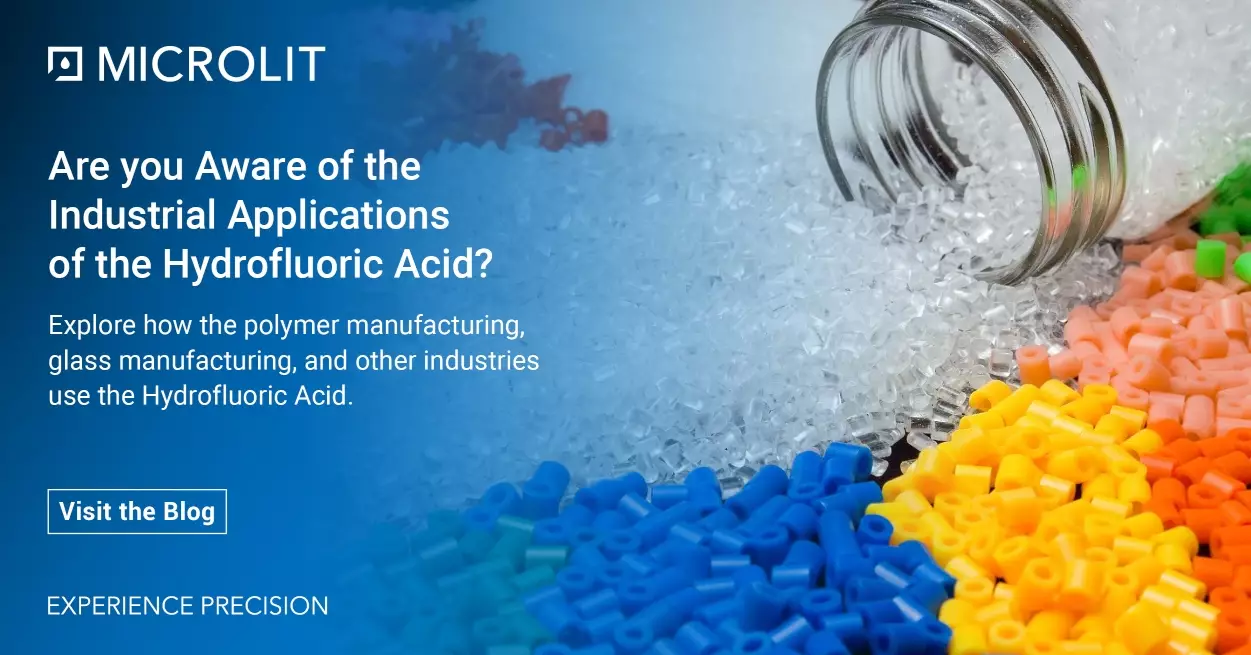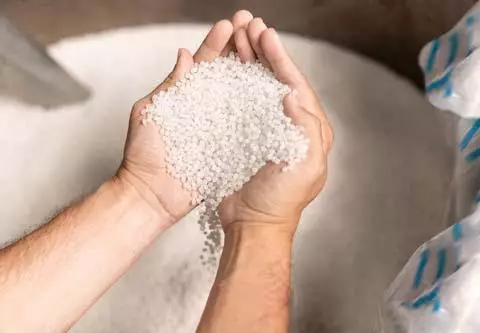Industrial Applications of Hydrofluoric Acid
- September 13, 2021
- ENQUIRE NOW

Hydrofluoric acid is the liquid form of hydrogen fluoride (HF), a fluorine containing compound. When the compound dissolves in water, it gives a colorless liquid called hydrofluoric acid.
Hydrofluoric acid has a pungent smell and its contact with the skin can result in skin burn, redness and even skin breakdown. If HF is not readily neutralized, it might result in limb loss or even death.
A workplace or lab hazard may occur if hydrofluoric acid is not dispensed safely. The likelihood of exposure and severity of the damage depends on the acid concentration, site and duration of exposure.
Although hydrofluoric acid is corrosive in nature, some of its properties make it extremely useful for industrial applications. A few of them are listed below. Let us have a look at them.
1. Glass Manufacturing Industry
The main raw materials used in the manufacturing of nearly all types of glass are silica sand and sodium carbonate. Additionally, lead oxide is used for crystal glass.
The final stage of the manufacturing process is to pass the glass slowly through a bath containing a mixture of hydrofluoric acid and sulphuric acid. Aqueous hydrofluoric acid solutions are the only acids capable of dissolving the raw material, silica, in an acceptable time. It is this final acid treatment which gives crystal glass the sparkling finish for which it is revered throughout the world.
The hydrofluoric acid leaves transparent and smooth impressions on the glass surface. In contrast, the gaseous form of hydrofluoric acid results in an opaque and irregular surface due to the strong bond formed between fluoride anions and the silicon molecules in the glass.
2. Pharmaceutical Industry
 Another important industry where hydrofluoric acid plays a significant role is the pharmaceutical industry. This acid acts as a precursor to almost all fluorine compounds, including the commonly used pharmaceutical antidepressant medication Fluoxetine (Prozac). Many companies use this acid to prepare fluorine containing medicinal products and antibiotics.
Another important industry where hydrofluoric acid plays a significant role is the pharmaceutical industry. This acid acts as a precursor to almost all fluorine compounds, including the commonly used pharmaceutical antidepressant medication Fluoxetine (Prozac). Many companies use this acid to prepare fluorine containing medicinal products and antibiotics.
3. Petrochemical Industry
In addition to many uses of hydrofluoric acid, it is used in the petrochemical field too. This acid is commonly used as a catalyst in the process of alkylation. Alkylation enhances the yield from crude oil and increases the quality of petroleum. The use of catalysts promotes benefits in terms of process efficiency and economy.
4. Agricultural Industry

The agriculture industry widely uses hydrofluoric acid to prepare fluorine rich pesticides, herbicides and insecticides. Yield, fluorine uptake and soil acidity are not affected by the application of hydrofluoric acid. However, it is expected to stimulate soil efficiency through rain and dew in contrast to the effects induced by parallels of hydrofluoric acid.
5. Polymer Industry

Hydrofluoric acid is a vital reagent in the production of fluorine containing polymers. Many organofluorine compounds like polytetrafluoroethylene (teflon), fluorocarbons and refrigerants such as freon are prepared using HF.
Many high volume inorganic fluoride compounds are also prepared from hydrofluoric acid. Foremost are cryolite (Na3AlF6) and aluminium trifluoride (AlF3).
Safety considerations while using the Hydrofluoric Acid
The physical and chemical attributes of the hydrofluoric acid make it extremely dangerous. The exposure to this acid can occur via the nose, mouth or skin.
Inhalation of hydrogen fluoride vapors through the nose or mouth may lead to difficulty in breathing, choking and even death, if untreated. If ingested through the mouth, it can burn the inner skin lining of the throat, food pipe, and stomach.

Considering the corrosive and dangerous nature of the acid, it is essential to dispense it carefully in the laboratory.
One must wear protective clothing while working with HF. These include a laboratory coat/acid resistant apron, closed-toe shoes, long pants, gloves, face shield in conjunction with goggles.
Using instruments that provide a closed medium to dispense the acid can also be very helpful. One such instrument is the Lentus Bottle Top Dispenser. It provides ease and safety of use by employing a closed medium to dispense the fluid. It avoids exposure to any fumes from the acid or accidental spillage in comparison to other volumetric equipment such as measuring cylinders, beakers and flasks.

The Lentus also uses springless valve technology which enhances its chemical compatibility.
This dispenser is of significant value to conduct qualitative and quantitative assessments in the research & development department of various industries. The strict quality maintenance and protocol requirements of the industries make it imperative to ensure consistency in all the procedures and follow the lab safety standards without making the process too cumbersome and time-consuming. It is where this product provides value and acts as an upgrade in the liquid handling equipment field.
To know more about Microlit Lentus Bottle Top Dispenser, write to us at info@microlit.com.





